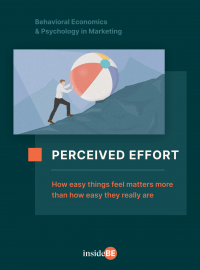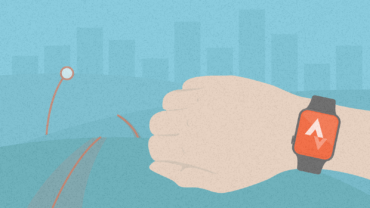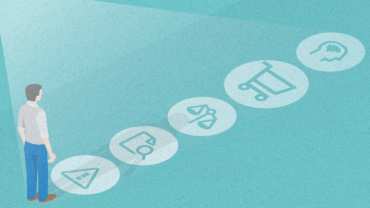Lower Perceived Effort to Improve Your CX
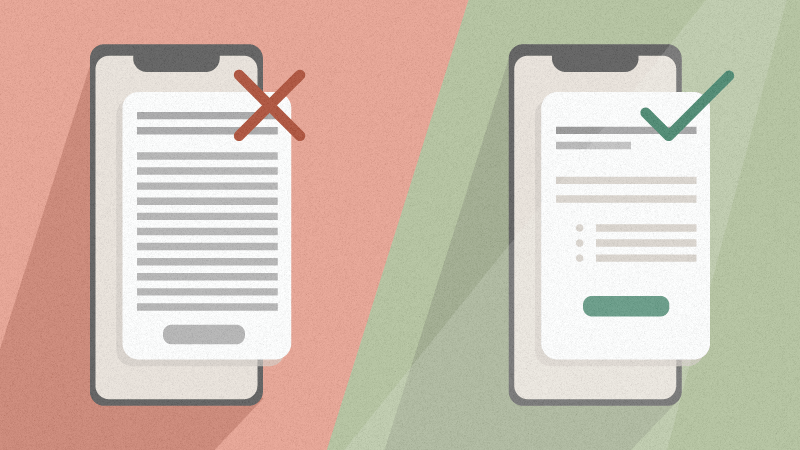
A bad customer experience can drive your customers away. And what is the greatest factor behind good CX? The effort that customers think they need to make. With the right use of behavioral economics, you can easily make that feel lower.
In this article, you’ll discover:
- Why an optimal customer experience is better than a great customer experience and how to achieve one;
- How to make the actions customers need to take look way easier than they actually are; and
- How a job-search portal increased the number of CVs sent to them by 154% simply by using the right words.
Imagine the following situation: It’s 6:00 PM and you are about to leave the last Zoom call of the day. It’s your 7th call today, you’re tired and can’t wait to just shut down your brain and relax (sound familiar so far?)
But there’s one last task you still have to do – to return the shoes you bought for your partner for Christmas, as they’re the wrong size. You bought them online, so you need to send them back.
First, you decide to look up the return policy, but lord, it takes forever to find it on their website! But the true horror only comes after you actually click on it. What you see is a mass of unstructured text. From the first sentence, it’s clear that there’s a ton of hard-to-understand, bureaucratic language ahead.
That’s it. Even if you weren’t exhausted, this would just make you angry. Now, you just close the website and refuse to go through this torture. But then you realize that you really want your money back, so you decide to spend the next several minutes in pain.
Perceived effort is one of the main drivers of customer experience
After an experience like this, would you come back to this site to buy again? The chances are you wouldn’t.
Psychologists have invested a lot of time in finding out what constitutes the optimal customer experience. And it’s not a coincidence that you just read optimal. Not great, not terrific, but optimal. Why? Matthew Dixon, Nick Toman, and, Rick DeLisi summed it up in their book The Effortless Experience: Conquering the New Battleground for Customer Loyalty.
Perceived Effort
The perceived effort is not about what your customers have to do, but how difficult they feel it is. It can be easily changed with the right choice of words or structure of information.
The research shows that there is little difference in loyalty between customers whose expectations are met and those whose expectations are exceeded.
But there is a difference between those satisfied with the customer service and those who weren’t.
So, the question is, what drives that dissatisfaction?
The answer is not that hard to find. The authors’ research showed that what customers really look for is indeed an effortless experience. They want a solution, and they want it now. Without too much effort, and as quickly as possible.
It’s no surprise they don’t want to switch between channels and look for answers for hours. If they can ease their pain quickly and effortlessly, their satisfaction goes up and they are much more likely to come back.

Discover ground-breaking ideas and fascinating solutions.
So far it makes sense, doesn’t it? How would you feel if you wanted to downgrade your Netflix subscription plan, but to do so you had to fill out the longest form and call a customer service line that’s only available for a couple of hours per day? Not great, right?
Fortunately, this is not the case, and Netflix assures you that downgrading is seamless right away during the registration process. But that’s a story for another time.
However, there’s one thing that isn’t that obvious. The objective obstacles in customer service account only for a third of how difficult customers think something is. And the other two-thirds? That’s how customers feel about it.

Why is that? Our brains simply don’t like hard work. You’ve surely noticed that yourself already. Every time you need to do something that you’re really not looking forward to, you’d rather go on YouTube and spend the next half an hour watching random scenes from The Office.
Even if it’s just a 15-minute task, our brains are constantly evaluating how difficult it will be with one goal in mind – to preserve energy. The task doesn’t need to be objectively hard, but if it looks horrible, we perceive the required effort as much higher than it will actually be.
To be more scientific about it – the harder it is to process the information, the harder the action seems to be.
In a study by Song and Schwarz, two groups were provided with a text explaining a simple workout routine. One of them was given a difficult-to-read script, while the other was given an easy-to-read Arial font:
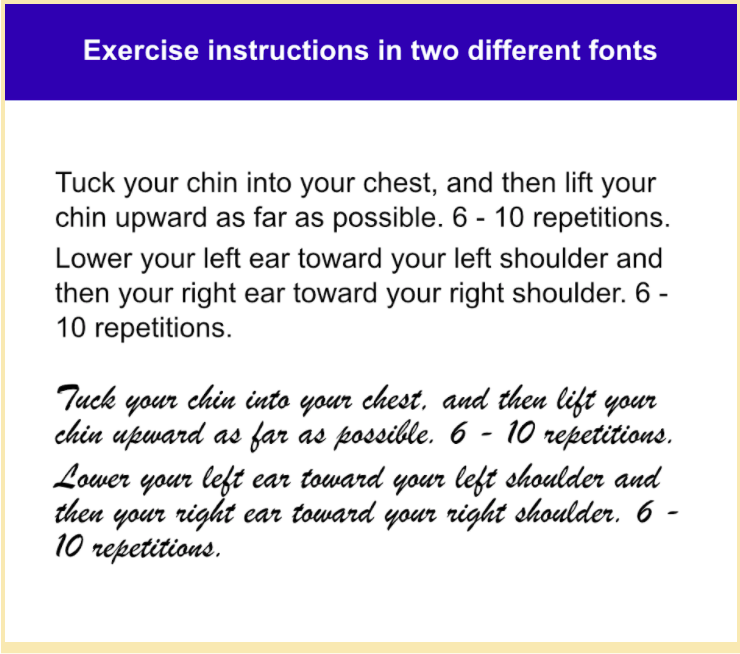
When the instructions were written in Arial, people estimated it would take about 8 minutes to perform the exercise. Those who read the message written in the hard-to-read script estimated it would take about 15 minutes and were less willing to incorporate it into their daily activities.
Tips to lower perceived effort and improve customer experience
So, to improve your CX, you need to decrease both objective and subjective effort. With the objective effort, it’s a bit easier. You need to get rid of friction and make the desired behavior as easy to do as possible.
However, to lower the perceived effort, you need to make it feel easy. There are a couple of ways to do that.
Structure the instructions
The more structured the information is, the easier it is for us to process. Let’s go back to the example with your Netflix subscription – imagine you want to downgrade your subscription plan. You find the instructions pretty easily, but they look like this:
“In order to upgrade or downgrade your subscription plan, you need to click on your account icon and then go to the Settings section. Then you need to find the Plan details section and click the Change plan button. After that, you will be shown all of the subscription options with all of the features for each plan and all the information you need. You can choose from three options – Basic, Standard, and Premium. Select the plan that suits your needs the best and click on Save the Settings.”
Ugh, the text is long, unstructured, and too complicated. It creates a sense that the action itself won’t be very easy to do as well. How about we put more structure to it?
To upgrade or downgrade your subscription plan, follow these steps:
- Go to your account settings
- Click the Change plan button in the Plan details section
- Select the plan you want and click Save the settings
Better? The information is the same, but it’s way more structured so our brains automatically consider the action to be easier to do.
Use the right language to make it seem easy to do
As every copywriter knows, the right language can make a night and day difference. One of the ways of making an action look easy is to simply use words that evoke such feelings.
Use words like “easy”, “simple”, or “it’s enough to” if possible, and avoid formulations with words such as “must”, “can’t”, “won’t”, “is required” and “don’t”.
Also, show customers how effortless the whole process is by stating exactly how long it will take – for example, no more than 5 minutes. That’s enough for customers to evaluate it as an easy-to-do task. Of course, if it objectively takes an hour, this strategy can backfire.
Let’s tweak the subscription copy a little bit by adding the right words:
You can change your subscription in less than 1 minute. Just follow these three easy steps:
- Go to your account settings
- Click the Change the plan button in the Plan details section
- Select the plan you want and click Save the settings
Changing the language is a piece of cake, but the results can be stunning. For example, it was one of the things MINDWORX Consultancy used to increase conversions for a job-search portal by 154%.
Chunk the process into smaller sections
Imagine you need to deal with some issue, and you’re asked to fill in some necessary information for customer service to help you – but the questionnaire looks like it’s never-ending. You’re scrolling and scrolling, but there are just too many questions. It looks something like this:
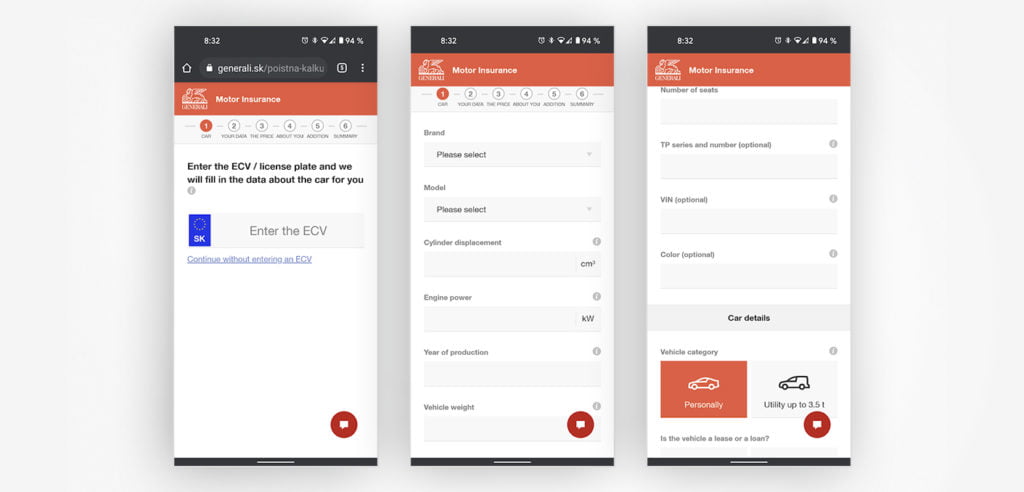
This is, in fact, a real insurance calculator. And it looks like it will take some time. What customers do in situations like that is judge the difficulty of the task based on the time it will take. If it seems it will take a while, they will presume it’s more difficult to do.
How about if you were presented the questions in smaller chunks instead? This, for example, is Tinder’s registration process which, among other behavioral principles, lowers the perceived effort significantly:

It’s not like they don’t need information about you, but they ask for it in small pieces, in this case, one by one.
So, when you need customers to do something, don’t throw tons of questions at them all at once. Split them into more digestible chunks.
You can even show them a progress bar letting them see what portion they’ve already completed. They’ll know what to expect and it won’t seem that terrifying. It could look something like this:

The sentence “Just a few steps and you are done” would give it a nice ring as well.
Key takeaways:
- The key to a great customer experience is to lower the perceived effort – how hard it feels for the customer to take action. It goes for customer service, the registration process, or whatever actions customers come across.
- The more structured the information is, the easier it is for the customer to process. And easy to process instructions mean the customer perceives a lower required effort.
- Use words like “easy”, “simple”, or “it’s enough to”. These evoke feelings of ease. On the other hand, avoid formulations with words such as “must”, “can’t”, “won’t”, “is required”, and “don’t”.
- Chunk the process into smaller steps. Whatever customers need to do, it will look easier when presented in smaller chunks.

